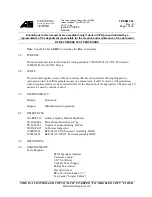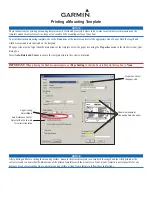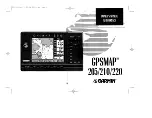
4 - The PatchMix DSP Mixer
Main Section
E-MU PCIe Digital Audio Systems
53
Auxiliary Effects & Returns
The Wet/Dry mix
setting in the effect should
normally be set to 100%
when the effect is inserted
as a sidechain effect. This
is because the Aux Return
Amount will control the
wet/dry mix.
The section immediately below the TV Screen is where you assign the Auxiliary Effects.
In a traditional mixing console, auxiliary effects sends are used to send part of the
signal to outboard effect devices, then return the effected signal back into the mix using
the effect returns. This is called a sidechain routing because the aux signal takes a
detour through the effects before being summed back into the main mix.
Sidechain effects are usually effects that you might want applied to several channels,
such as reverb. Effects such as EQ and compressors are usually NOT used as sidechain
effects because they can cause unpredictable results when returned to the main bus.
Main Bus
Side
Chain
Input
Fader
Mute
Output
Return
Amount
Send
Amount
Input
Pan
Aux
Amt
Aux
Amt
Aux Bus
Sidechain Diagram
(Post-Fader Aux Sends)
Send
Amount
Sidechain
Effects
Return
Amount
Signal Flow
You can also use the Auxiliary Sends as two extra mix buses. By turning the Aux Return
amount all the way down and dropping an Insert Send into the chain, you can send the
Auxiliary bus to any output you wish. See
“Insert Section”
for more information.‚
Sync/Sample Rate Indicators
The Sync/Sample rate Indicators show the current
session’s sample rate and whether it is internal or slaving
to an external source. The display indicates which
sample rate is currently in effect. If an external source is
being used, the Source display reads “EXTERNAL.”
When slaving to an external master source, the clock
may drift slightly or change dramatically (i.e. abrupt
sample rate change or unplugging of physical master
source). PatchMix DSP is tolerant to minor drifting
within the supported rates of 44.1k, 48k, 88.2k, 96k,
176.4k and 192k, but if the sample rate drifts out of this
range the “LOCKED” LED will extinguish.
If the external clock source makes a radical sample rate change from the lower rates of
44.1k/48k to a higher rate or between any of the higher rates, the hardware automati-
cally switches to internal 48kHz clock until the proper external clock is restored. The
“LOCKED” LED will be off and the two units are NOT synchronized. Always check the
“LOCKED” LED when using an external clock source to make sure you are sample-
locked.
Содержание E-MU 1212M PCIE
Страница 1: ...E MU PCIe Digital Audio Systems 1 Owner s Manual Owner s Manual ...
Страница 8: ...8 Creative Professional ...
















































